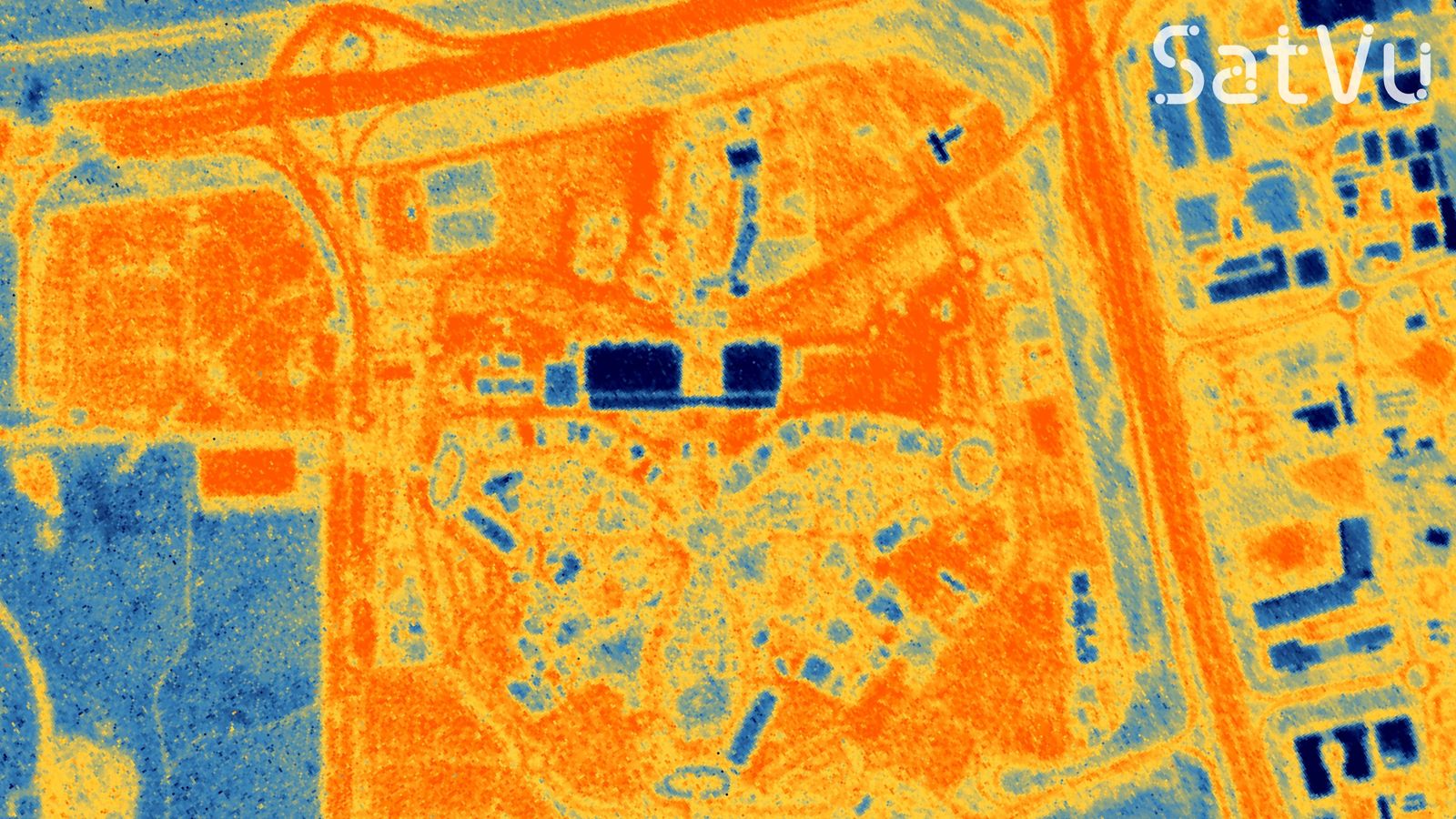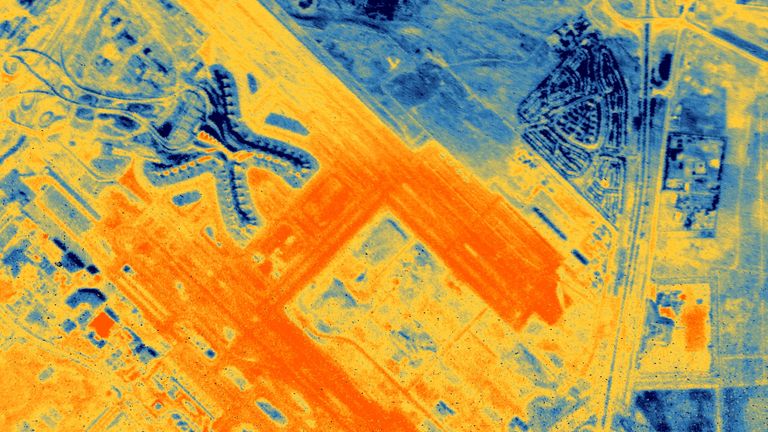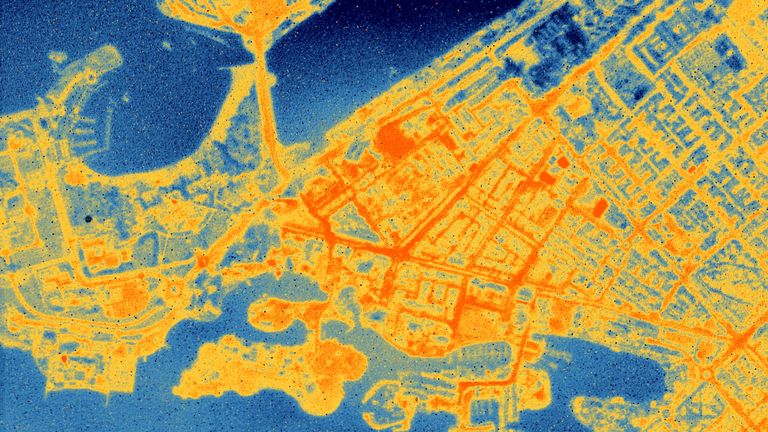A British-built ‘flying thermometer’ has taken images of the sun-baked venue of the Dubai climate summit to highlight how rising global temperatures will challenge urban areas.
HOTSAT-1 was launched by SpaceX over the summer. Unlike satellites that monitor the Earth with cameras that ‘see’ visible light, like our eyes, it monitors infrared radiation to register how much heat is being given off in any given area.
The image, released exclusively to Sky News, shows roads and concrete walkways around the COP28 complex in the United Arab Emirates (UAE) glowing bright red because of the heat absorbed from the sun.
By contrast a park in the bottom left of the image is coloured blue because the vegetation is much cooler.
There is increasing concern about the so-called ‘urban heat island,’ when hot hard surfaces keep the surrounding air much warmer at night than in more rural areas.
The effect has been linked to higher death rates during heatwaves and scientists warn many more trees need to be planted to shade towns and cities as the global climate becomes hotter.
Anthony Baker, cofounder of SatVu, said: “The COP28 site and other key infrastructure in the UAE, seen through the lens of our thermal imaging satellite, brings a new perspective to existing climate data that can help us make smarter decisions for our planet.”
HOTSAT-1 has also taken a thermal image of Abu Dhabi International Airport, also in the UAE.
The runways and concrete apron are clearly visible in red, while the surrounding desert and grassland is a cooler blue.
The X-shaped terminal building is also much cooler, as is the village in the top right, which has trees planted along its streets.
Read more:
‘World’s thermometer’ sends back first pictures of Earth’s hotspots
Satellite which could save you money pinpoints homes leaking most heat
Every image ‘a testament to our shared responsibility’
A third image shows the upscale area of Al Bateen in Abu Dhabi.
Again it shows dense areas of buildings and roads glowing red because they have absorbed so much energy from the sun.
The Emirates Palace Mandarin Oriental resort on the left of the image is much cooler because of large areas of vegetation. Boats are also visible in the harbours.
“Every image is a testament to our shared responsibility to protect the environment,” said Mr Baker.
“Together, through cutting-edge innovation and relentless dedication, we can turn these insights into action, forging a sustainable future for generations to come.”


